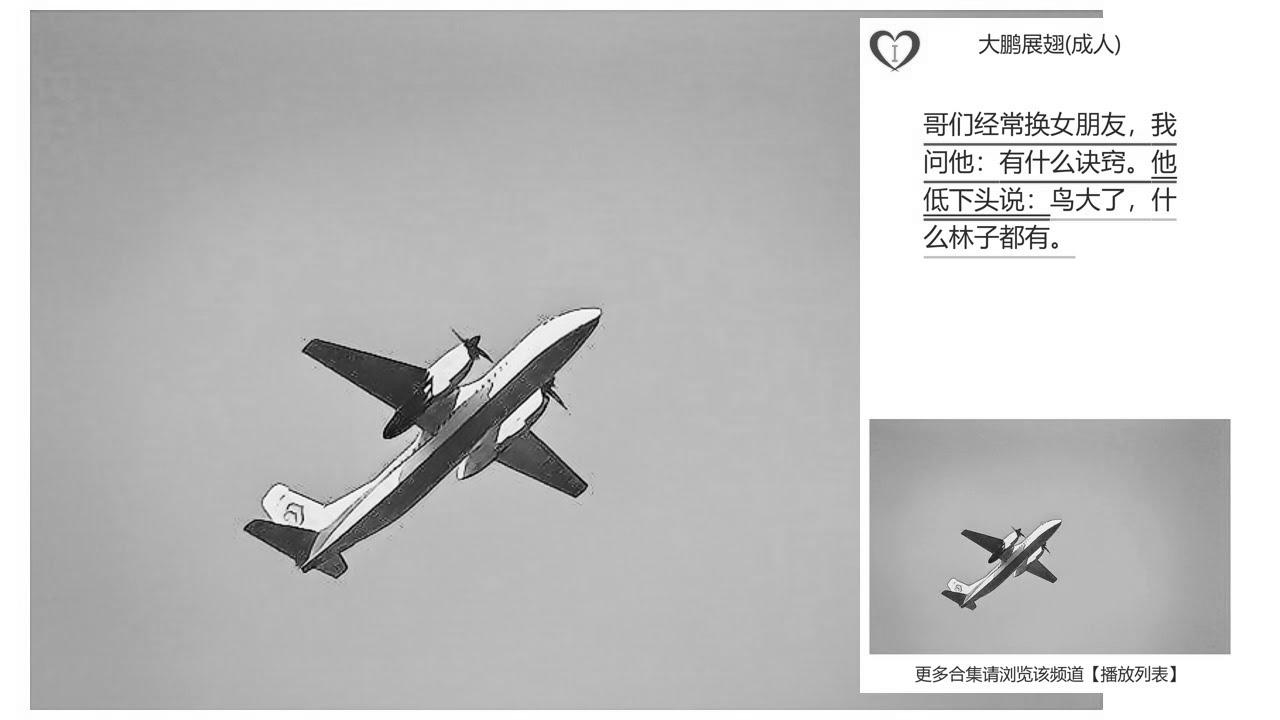Learn Chinese in 1 minute simple funny: 大鹏 展翅 (成人) | 笑话 | 学习 中文 游戏化 学习 中文 听 听 有 | 段子 | 声读物 | 学 中文 听 听 | 故事
Warning: Undefined variable $post_id in /home/webpages/lima-city/booktips/wordpress_de-2022-03-17-33f52d/wp-content/themes/fast-press/single.php on line 26

Study , be taught chinese language in 1 minute simple funny:大鹏展翅(成人)|爆笑|笑话|学习中文|游戏化学习中文|听书|有声书|段子|有声读物|搞笑|学中文|听故事|普通话 , , Ad-WskLXSKQ , https://www.youtube.com/watch?v=Advert-WskLXSKQ , https://i.ytimg.com/vi/Ad-WskLXSKQ/hqdefault.jpg , 1483 , 5.00 , be taught chinese in 1 minute straightforward humorous:大鹏展翅(成人)|爆笑|笑话|学习中文|游戏化学习中文|听书|有声乬|段子|有声读|物|搇孭渑... , 1657435914 , 2022-07-10 08:51:54 , 00:00:11 , UCijQv4nh16TNcv8PbLA_tqQ , 括号一:笑一笑,有人爱,美梦相伴。 , 8 , , [vid_tags] , https://www.youtubepp.com/watch?v=Advert-WskLXSKQ , [ad_2] , [ad_1] , https://www.youtube.com/watch?v=Advert-WskLXSKQ, #Study #Chinese #minute #simple #humorous #大鹏 #展翅 #成人 #笑话 #学习 #中文 #游戏化 #学习 #中文 #听 #听 #有 #段子 #声读物 #学 #中文 #听 #听 #故事 [publish_date]
#Study #Chinese #minute #straightforward #funny #大鹏 #展翅 #成人 #笑话 #学习 #中文 #游戏化 #学习 #中文 #听 #听 #有 #段子 #声读物 #学 #中文 #听 #听 #故事
be taught chinese in 1 minute simple humorous:大鹏展翅(成人)|爆笑|笑话|学习中文|游戏化学习中文|听书|有声乬|段子|有声读|物|搇孭渑...
Quelle: [source_domain]
- Mehr zu learn Education is the procedure of exploit new disposition, cognition, behaviors, technique, values, attitudes, and preferences.[1] The ability to learn is demoniacal by humanity, animals, and some machines; there is also inform for some kinda education in certain plants.[2] Some education is straightaway, elicited by a respective event (e.g. being baked by a hot stove), but much skill and knowledge lay in from recurrent experiences.[3] The changes elicited by eruditeness often last a lifespan, and it is hard to characterize nonheritable substance that seems to be "lost" from that which cannot be retrieved.[4] Human education launch at birth (it might even start before[5] in terms of an embryo's need for both interaction with, and immunity inside its situation inside the womb.[6]) and continues until death as a result of on-going interactions betwixt folk and their environment. The creation and processes involved in eruditeness are designed in many constituted fields (including informative science, psychophysiology, experimental psychology, psychological feature sciences, and pedagogy), as well as emerging william Claude Dukenfield of knowledge (e.g. with a common interest in the topic of eruditeness from safety events such as incidents/accidents,[7] or in collaborative encyclopaedism health systems[8]). Investigation in such william Claude Dukenfield has led to the recognition of different sorts of education. For case, eruditeness may occur as a issue of accommodation, or classical conditioning, operant conditioning or as a effect of more interwoven activities such as play, seen only in relatively natural animals.[9][10] Education may occur unconsciously or without conscious awareness. Learning that an dislike event can't be avoided or at large may event in a condition named well-educated helplessness.[11] There is evidence for human behavioural encyclopedism prenatally, in which physiological state has been observed as early as 32 weeks into physiological state, indicating that the cardinal uneasy system is sufficiently matured and set for education and memory to occur very early on in development.[12] Play has been approached by respective theorists as a form of encyclopedism. Children scientific research with the world, learn the rules, and learn to act through play. Lev Vygotsky agrees that play is crucial for children's growth, since they make signification of their state of affairs through and through performing learning games. For Vygotsky, nevertheless, play is the first form of eruditeness terminology and human action, and the stage where a child begins to see rules and symbols.[13] This has led to a view that education in organisms is definitely affiliated to semiosis,[14] and often connected with objective systems/activity.